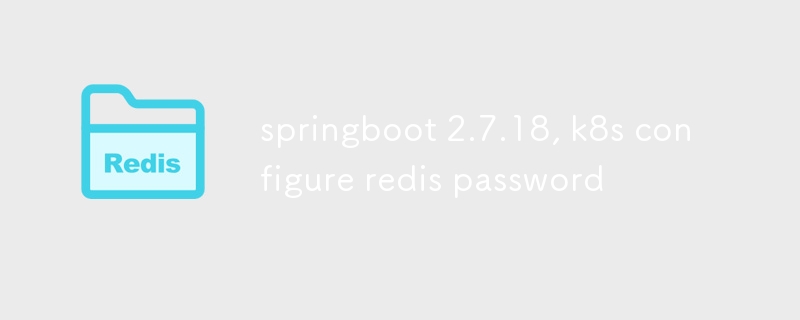This article explores the configuration of Redis passwords for SpringBoot 2.7.18 Kubernetes deployments. It discusses three methods: using environment variables, Kubernetes ConfigMaps, and Kubernetes Secrets, emphasizing the advantages of using Secre

Method 1: Using Environment Variables:
Add the Redis password to the environment variables of the Pod. For example, using Helm:
<code>helm upgrade --set redis.master.password=my_password release-name</code>
Method 2: Using ConfigMaps:
Create a Kubernetes ConfigMap with the name of the Redis password:
<code>kubectl create configmap redis-config --from-literal=password=my_password</code>
Then, use the ConfigMap in the Springboot Pod to retrieve the password:
<code>spring:
redis:
password: ${REDIS_PASSWORD:my_password}</code>Method 3: Using Kubernetes Secrets:
Create a Kubernetes Secret named redis-secret with a key-value pair of password and the Redis password:
<code>kubectl create secret generic redis-secret --from-literal=password=my_password</code>
Then, use the Secret in the Springboot Pod to retrieve the password:
<code>spring:
redis:
password: ${REDIS_SECRET:redis-secret:password}</code>The common method used to provide the Redis password to Springboot 2.7.18 Pod on Kubernetes are:
Kubernetes Secrets are one of the best methods to securely store and manage Redis passwords for Springboot 2.7.18 deployments. They provide several advantages:
The above is the detailed content of springboot 2.7.18, k8s configure redis password. For more information, please follow other related articles on the PHP Chinese website!
 Disk scheduling algorithm
Disk scheduling algorithm
 The difference between shingled disks and vertical disks
The difference between shingled disks and vertical disks
 Android desktop software recommendations
Android desktop software recommendations
 Why is my phone not turned off but when someone calls me it prompts me to turn it off?
Why is my phone not turned off but when someone calls me it prompts me to turn it off?
 Springcloud five major components
Springcloud five major components
 Bitcoin latest price trend
Bitcoin latest price trend
 Comparative analysis of iqooneo8 and iqooneo9
Comparative analysis of iqooneo8 and iqooneo9
 What is the role of kafka consumer group
What is the role of kafka consumer group
 Flutter framework advantages and disadvantages
Flutter framework advantages and disadvantages




